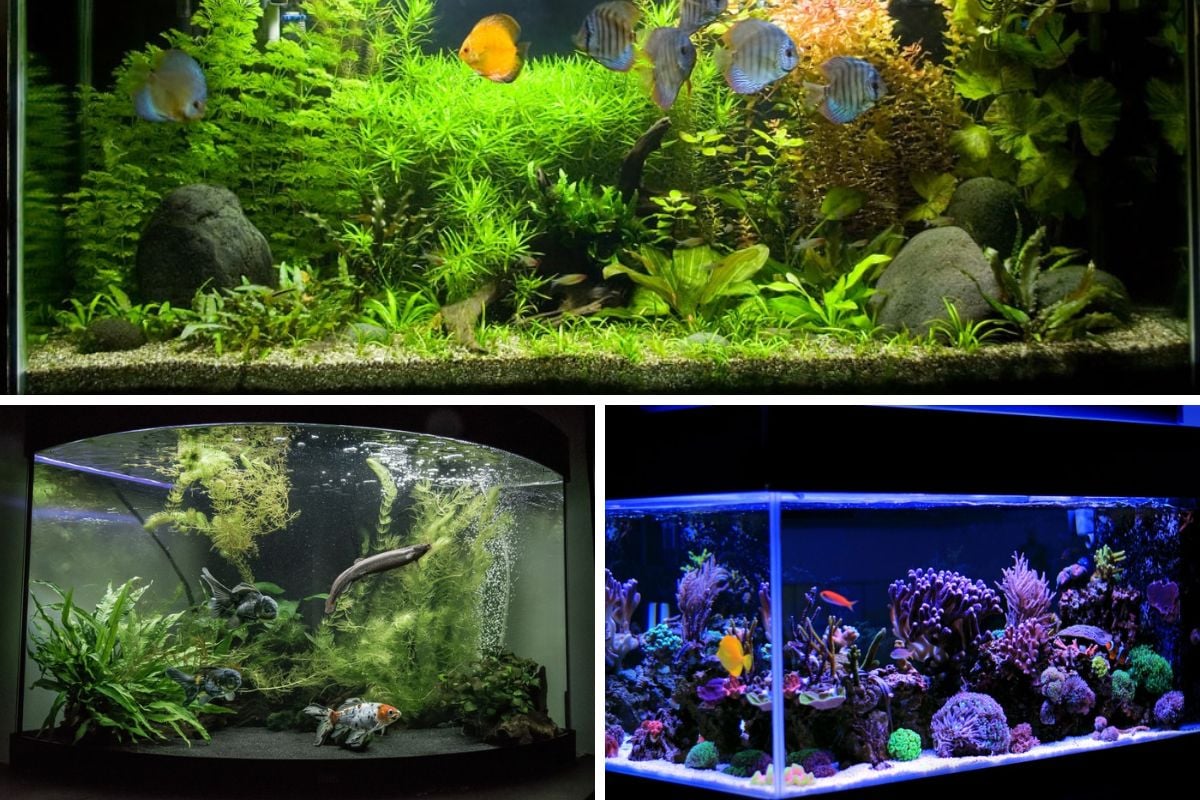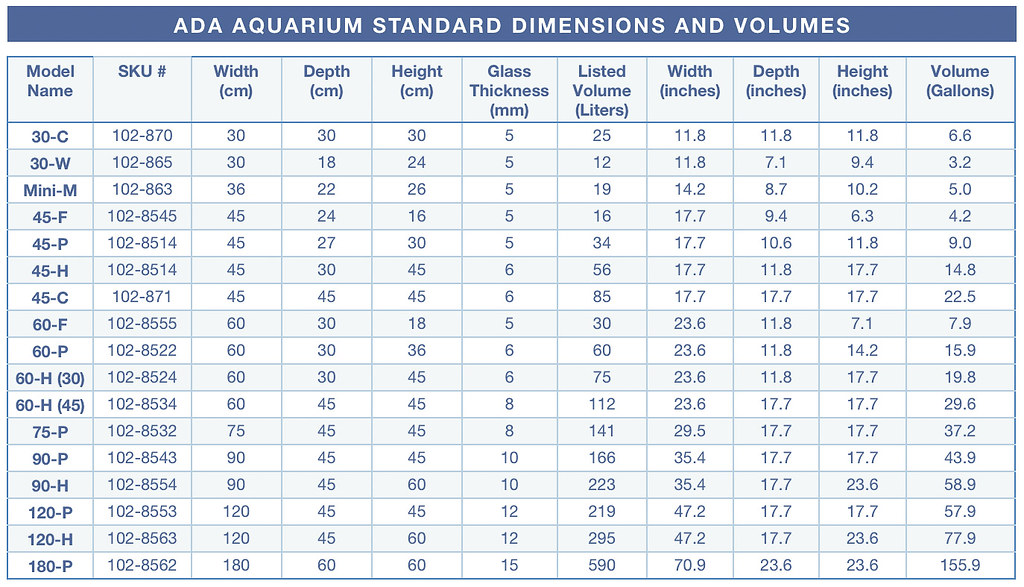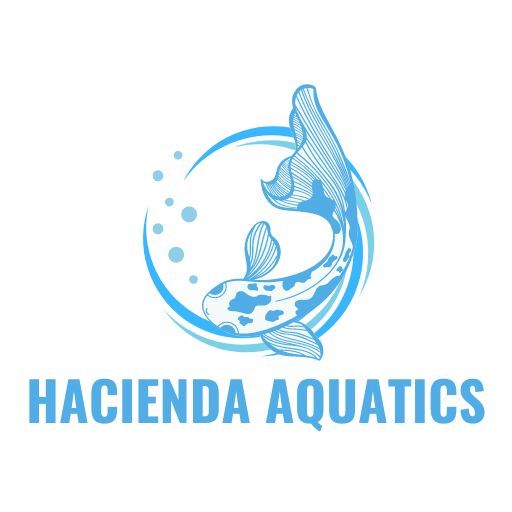Aquatic Knowledge
How to Calculate Aquarium Gallons for Your Fish Tank
Whether you’re a seasoned aquarist or just starting out, one of the most important factors to consider is the size of your aquarium. Knowing how to calculate aquarium gallons not only helps you choose the right fish but also ensures the health of your aquatic pets. This guide will walk you through the steps, give you tips, and explain why size truly matters when it comes to aquariums.
What is an Aquarium Gallon?

An aquarium gallon is a measurement of the volume of water an aquarium can hold, typically expressed in US gallons. This measurement is crucial because it helps determine the capacity of your tank, ensuring you provide a healthy and stable environment for your aquatic pets. Knowing how to calculate aquarium gallons allows you to make informed decisions about fish stocking, filtration, and other essential aspects of aquarium maintenance.
Types of Aquariums

Freshwater Aquariums
Freshwater aquariums are popular among beginners due to their ease of maintenance. They offer a wide variety of fish and plant species and are generally less expensive to set up and maintain than saltwater tanks.
Saltwater Aquariums
Saltwater aquariums are more complex and require precise water conditions, but they provide the opportunity to keep vibrant marine life, including corals, invertebrates, and exotic fish. They are more challenging but highly rewarding for experienced aquarists.
Custom-built Aquariums
Custom-built aquariums offer flexibility in terms of size and shape, allowing for unique and personalized designs. However, they require accurate measurements and planning to ensure proper maintenance and a stable environment for aquatic life.
Standard Aquarium Sizes

Common Sizes and Their Gallon Capacities
Standard aquarium sizes range from small 10-gallon tanks to large 100-gallon setups. Each size caters to different needs, with smaller tanks being ideal for beginners or limited spaces, and larger tanks allowing for more diverse and complex aquatic ecosystems.
How to Choose the Right Size for Your Needs
When selecting an aquarium size, consider factors such as available space, budget, and the species of fish you plan to keep. Larger tanks provide more stability in water conditions and more room for fish, but they require more maintenance and higher initial costs.
Why Knowing Your Aquarium’s Gallon Size is Crucial
Understanding the exact size of your aquarium is one of the most critical aspects of maintaining a healthy and thriving aquatic environment. Why? Because everything from the health of your fish to the efficiency of your equipment depends on it. Let’s dive deeper into why knowing your aquarium’s gallon size is so important.
Importance of Accurate Measurement
First and foremost, knowing the precise gallon size of your tank allows you to select the right equipment, like filters, heaters, and lights, all of which are essential for maintaining your aquarium’s water quality and temperature.
- Filters: The size of your tank dictates what type and size of filter you need. If the filter is too small, it won’t process the water efficiently, leading to cloudy, dirty water that can stress or even harm your fish. A filter that’s too big may create too much water flow, making it difficult for your fish to swim comfortably.
- Heaters: Aquarium heaters are sized based on gallons. An underpowered heater won’t be able to maintain the proper temperature, especially in larger tanks, leading to fluctuations that can stress your fish. On the flip side, an overpowered heater can heat the water too quickly or unevenly, which is also harmful.
- Lighting: Correct lighting not only enhances the beauty of your tank but also supports plant growth. Fish and aquatic plants have different light requirements, and getting the right light depends on your tank’s gallon size.
Accurate measurements help you avoid issues like insufficient filtration or heating, ensuring your fish live in clean, stable conditions.
Impact on Fish and Plants
Fish need room to swim, explore, and thrive, much like we need space to move around comfortably in our homes. The right gallon size prevents overcrowding, which can lead to stress, poor water quality, and health issues.
- Fish Health and Behavior: Fish species vary in size and temperament. Overcrowding can cause territorial disputes, aggression, and stress. Imagine living in a tiny apartment with too many people—things can get chaotic! For fish, it’s the same. Cramped conditions increase their stress levels, which weakens their immune systems and makes them more susceptible to diseases.
- Water Quality: A larger tank allows for better water circulation and dilution of toxins like ammonia, nitrites, and nitrates. Overcrowded tanks produce more waste, making it harder for filters to keep up and maintain good water quality.
- Plants: Live plants in an aquarium are not just decorative; they also play a key role in the ecosystem. They absorb CO2, release oxygen, and provide hiding spots for fish. However, just like fish, plants need space. If they’re crammed into a small tank, they’ll compete for light and nutrients, which can stunt their growth and reduce their health.
In short, knowing your aquarium’s gallon size ensures you can stock the appropriate number of fish and plants, maintaining a balanced ecosystem where everything thrives harmoniously.
How to Calculate Aquarium Gallons
To calculate your aquarium’s size in gallons, you need to measure its dimensions and do a little math. If your tank is a standard rectangle, things are pretty simple. But if your aquarium is shaped like a cylinder, bow front, or something unique, there’s a bit more to it.
Simple Formula for Rectangular Tanks
For rectangular aquariums, use this formula:
Length x Width x Height (in inches) ÷ 231 = Gallons
Why divide by 231? That’s the number of cubic inches in one gallon of water.
How to Measure Irregular-Shaped Tanks
If your tank isn’t a rectangle, don’t worry. For cylindrical aquariums, use this formula:
π x Radius² x Height ÷ 231 = Gallons
Bow-front or custom-shaped aquariums are trickier, and you may need online calculators to get an accurate measurement.
Step-by-Step Guide for Rectangular Aquariums
Let’s break it down into easy steps for measuring a rectangular aquarium.
Step 1: Measure the Length
Start by measuring the length of your tank. Be sure to measure inside the tank rather than from edge to edge to get an accurate size.
Step 2: Measure the Width
Next, measure the width from front to back. Again, make sure to measure inside the tank to avoid overestimating.
Step 3: Measure the Height
Finally, measure the height from the base to the top of the waterline (not the very top of the tank).
Step 4: Apply the Formula
Now, plug these measurements into the formula:
(Length x Width x Height) ÷ 231
Boom! You’ve got your aquarium’s gallon size.
Conclusion
Knowing how to calculate aquarium gallons is essential for any aquarium enthusiast. It helps you maintain the right environment for your fish and plants, ensures proper filtration, and allows for accurate water changes. The next time you look at your tank, you’ll feel confident knowing exactly how much water it holds!
FAQs
How to Measure Odd-shaped Aquariums?
Break them into simpler shapes and calculate each section’s volume.
Do Aquarium Dimensions Affect Fish Health?
Yes, proper dimensions ensure adequate space and stable water conditions.
How to Convert Liters to Gallons?
Use the conversion factor: 1 gallon = 3.785 liters.
Best Practices for Measuring Water Displacement?
Measure water before and after adding decorations to determine displacement.
Tips for New Aquarium Owners?
Start with a standard rectangular tank and gradually explore more complex shapes as you gain experience.
